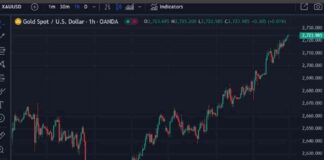Investing in volatile markets can be a daunting task, especially for retail investors. The recent fluctuations in the stock markets have left many individuals feeling anxious about the future of their investments. However, it is important to remember that volatility is a natural part of the market cycle and can present opportunities for savvy investors.
Understanding Volatility
Volatility refers to the degree of variation in the price of a financial instrument over time. It is a measure of the uncertainty or risk associated with an investment. In volatile markets, prices can swing dramatically in a short period, leading to potential gains or losses for investors. While this may sound intimidating, it is crucial to understand that volatility is not necessarily a bad thing.
One way to think about volatility is to consider it as the price of admission to potentially higher returns. Historically, volatile markets have tended to deliver higher long-term returns compared to more stable markets. This is because periods of volatility create opportunities to buy assets at lower prices, which can lead to significant gains when the market rebounds.
Investing Strategies for Volatile Markets
Despite the uncertainty that comes with volatile markets, there are several strategies that investors can employ to navigate these challenging times successfully. One key principle to keep in mind is to stay disciplined and avoid making impulsive decisions based on short-term market movements.
Diversification is a fundamental strategy for managing risk in volatile markets. By spreading your investments across different asset classes, industries, and geographies, you can reduce the impact of a downturn in any single sector or market. This can help cushion your portfolio against market fluctuations and minimize potential losses.
Another important strategy is to focus on the long term and avoid trying to time the market. Market timing is notoriously difficult, and attempting to predict short-term price movements can lead to missed opportunities and increased trading costs. Instead, maintain a long-term perspective and stick to your investment plan, regardless of short-term market fluctuations.
Opportunities in Volatile Markets
While volatility can be unsettling, it also presents unique opportunities for investors to capitalize on market inefficiencies. During periods of heightened volatility, asset prices may not accurately reflect their intrinsic value, creating opportunities for savvy investors to buy undervalued assets.
One way to take advantage of these opportunities is through dollar-cost averaging. This strategy involves investing a fixed amount of money at regular intervals, regardless of market conditions. By consistently buying assets at different price points, you can benefit from market downturns by purchasing more shares when prices are low and fewer shares when prices are high.
Additionally, volatile markets can create opportunities for active investors to generate alpha, or excess returns above a benchmark index. By conducting thorough research and identifying mispriced securities, active investors can potentially outperform the market and achieve superior returns.
In conclusion, investing in volatile markets requires a disciplined approach and a long-term perspective. By understanding the nature of volatility, diversifying your portfolio, and seizing opportunities presented by market fluctuations, retail investors can navigate turbulent times successfully and achieve their financial goals. Remember, volatility is not something to be feared but embraced as a potential source of long-term growth and wealth creation.

















